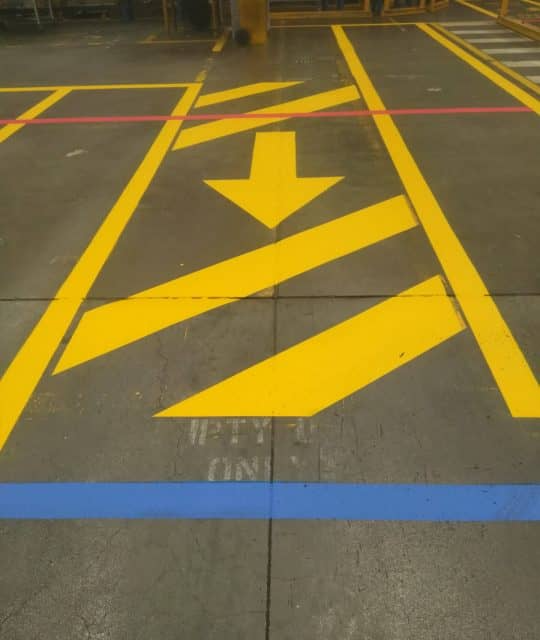Floor Marking – Transforming Spaces with Safety and Organization Introduction to Floor Marking

Every environment — from warehouses to commercial spaces — benefits from clear floor marking. These visual cues create order, direct movement, and reduce confusion. Without them, spaces can quickly become chaotic, unsafe, and inefficient. As a silent yet powerful communication tool, floor markings improve both functionality and safety.
Why Floor Marking Is Essential
Think of floor marking as a road map for your facility. Just as road markings guide drivers, floor markings guide employees, visitors, and vehicles within a workplace. They clearly indicate where to walk, where to stop, and which areas to avoid. This creates a structured flow that prevents accidents and supports smooth daily operations.

Safety at the Core
When safety is a priority, floor marking becomes an indispensable tool. Bright, visible markings can separate pedestrian areas from vehicle lanes, mark hazardous equipment zones, and highlight emergency exits. This proactive approach helps prevent accidents and ensures everyone knows exactly where they should and shouldn’t be.
Driving Efficiency Through Organization
Efficient workflows depend on organization, and floor marking is the backbone of that order. In production environments, markings help define specific workstations, material storage areas, and movement lanes. This reduces downtime, eliminates guesswork, and keeps tasks moving at a steady pace.
Choosing the Right Floor Marking Method
From painted lines to adhesive tape and thermoplastic markings, each method offers unique advantages. Painted lines are durable for permanent setups, adhesive tapes are quick to apply and replace, and thermoplastics provide high durability in outdoor or high-wear areas. The right choice depends on traffic levels, environmental conditions, and the frequency of layout changes.
Consistency Through Color Codes
Consistent color coding is key to making floor marking effective. Using universally recognized color meanings — such as yellow for pathways, red for hazards, and green for safety — ensures instant understanding. This visual standardization helps new employees and visitors adapt quickly to any environment.
Keeping Markings Fresh and Effective
Even the best markings need regular upkeep. Fading lines can cause confusion, so inspections should be part of routine maintenance. Repainting or replacing worn markings keeps them visible and effective, reinforcing safety and efficiency every day.
Conclusion
By implementing a strategic floor marking system, you transform your workspace into a safer, more organized, and more efficient environment. With the right materials, color codes, and maintenance plan, these markings remain a valuable asset for years to come.
- Art
- Causes
- Crafts
- Dance
- Drinks
- Film
- Fitness
- Food
- Παιχνίδια
- Gardening
- Health
- Κεντρική Σελίδα
- Literature
- Music
- Networking
- άλλο
- Party
- Religion
- Shopping
- Sports
- Theater
- Wellness


